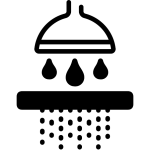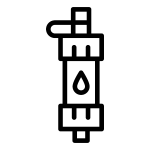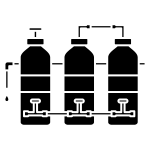A dripping bathtub faucet can be more than just an annoyance—it can waste gallons of water and increase your water bill significantly. Whether your faucet is leaking due to worn-out washers, a corroded valve seat, or other common plumbing issues, fixing it yourself can save you money and prevent further damage. In this guide, we’ll walk you through how to fix a dripping bathtub faucet step by step.
Why Is Your Bathtub Faucet Dripping?
Before you start the repair process, it’s essential to understand why your bathtub faucet is dripping. Here are some common reasons:
- Worn-Out Washers – Over time, rubber washers inside the faucet can deteriorate, leading to leaks.
- Damaged O-Rings – The O-ring creates a seal within the faucet, and if it wears out, it can cause leaks.
- Corroded Valve Seat – The valve seat connects the faucet and the spout. Corrosion in this area can lead to dripping.
- Faulty Cartridge – If your faucet has a cartridge, it may be worn or broken, leading to a leak.
- High Water Pressure – Sometimes, excessive water pressure can cause leaks by preventing the faucet from shutting off completely.
Tools and Materials You’ll Need
Before you start repairing your bathtub faucet, gather the following tools and materials:
- Adjustable wrench
- Phillips and flathead screwdrivers
- Plumber’s tape
- Replacement washers, O-rings, or cartridges (depending on your faucet type)
- Plumber’s grease
- Bucket or towel to catch excess water
- White vinegar (for cleaning corrosion)
Step-by-Step Guide to Fixing a Dripping Bathtub Faucet
Step 1: Turn Off the Water Supply
Before you begin any repair, turn off the water supply to prevent leaks and potential water damage. You can do this by shutting off the main water valve or the local shut-off valve if available. After turning off the water, open the faucet to drain any remaining water in the pipes.
Step 2: Remove the Faucet Handle
- Use a flathead screwdriver to remove the decorative cap on the faucet handle.
- Locate the screw inside and unscrew it using a Phillips screwdriver.
- Gently pull off the handle. If it’s stuck, apply some lubricant and wiggle it loose.
Step 3: Remove the Packing Nut and Stem
- Use an adjustable wrench to loosen and remove the packing nut.
- Once the nut is removed, carefully pull out the faucet stem.
- Inspect the stem for any signs of wear or damage.
Step 4: Inspect and Replace Washers and O-Rings
- If your faucet has a rubber washer at the bottom of the stem, check for wear or cracks.
- Remove the old washer and replace it with a new one of the same size.
- Check the O-ring as well and replace it if it looks worn out.
- Apply plumber’s grease to the new washer and O-ring for a better seal.
Step 5: Clean the Valve Seat
- If the valve seat is corroded, clean it using white vinegar and a scrub brush.
- If the corrosion is severe, you may need to replace the valve seat with a new one.
Step 6: Replace the Faucet Cartridge (If Applicable)
- If your faucet uses a cartridge instead of washers, remove the old cartridge and replace it with a new one.
- Ensure the cartridge is the correct type for your faucet model.
- Secure it in place following the manufacturer’s instructions.
Step 7: Reassemble the Faucet
- Insert the faucet stem or new cartridge back into place.
- Tighten the packing nut securely but avoid overtightening.
- Reattach the handle and secure it with the screw.
- Snap the decorative cap back in place.
Step 8: Turn the Water Supply Back On
- Slowly turn the water supply back on and check for leaks.
- If the faucet still drips, disassemble and check for missed components or improper installation.
- If the problem persists, consider calling a professional plumber for assistance.
Preventing Future Faucet Drips
Once you’ve successfully fixed your bathtub faucet, consider these tips to prevent future leaks:
- Regularly check and replace washers and O-rings before they wear out.
- Avoid overtightening the faucet handle, as this can damage the components.
- Monitor your water pressure and adjust it if necessary to prevent excessive wear on faucet parts.
- Clean mineral deposits and corrosion regularly using vinegar to extend the faucet’s lifespan.
When to Call a Professional
While fixing a dripping bathtub faucet is a straightforward task, there are times when professional help may be necessary. Consider calling a plumber if:
- The leak persists despite replacing washers and cartridges.
- The valve seat is severely corroded and needs replacement.
- You suspect internal pipe issues causing the leak.
Final Thoughts
Fixing a dripping bathtub faucet is a manageable DIY task that can save you money on water bills and prevent long-term damage. By following this step-by-step guide, you can identify the cause of the leak and repair it effectively. If you’re looking for high-quality showerheads and bathtub filters to enhance your bathroom experience, check out our collection at Cuoll.com. Investing in premium water filtration products can improve water quality and extend the lifespan of your bathroom fixtures.
By keeping your bathtub faucet in good condition, you can ensure a leak-free and efficient bathroom for years to come!








